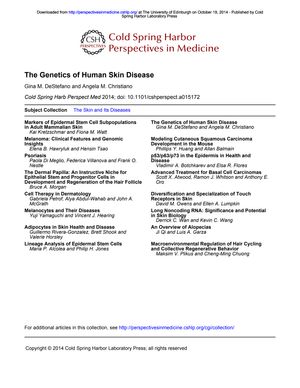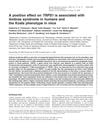The Genetics of Human Skin Disease
October 2014
in “
Cold Spring Harbor Perspectives in Medicine
”
alopecia areata atopic dermatitis vitiligo epidermolysis bullosa LAMA5 COL7A1 genetic mosaicism hypertrichoses syndromes microRNAs gene mutations genetic factors epigenetic factors environmental factors Human Genome Project GWAS NGS hair loss skin disease genetic mutations genetic techniques genetic research

TLDR Genetic research has advanced our understanding of skin diseases, but complex conditions require an integrative approach for deeper insight.
The document from 2014 provides a comprehensive overview of the genetic factors involved in various human skin diseases. It explains how classical genetic techniques and advancements from the Human Genome Project, GWAS, and NGS have contributed to the understanding of both monogenic and complex skin diseases. The paper details the identification of specific gene mutations, such as those in LAMA5 and COL7A1, which are responsible for different forms of epidermolysis bullosa, and how the nature and location of these mutations affect disease phenotype and inheritance. It also discusses the genetic basis of non-Mendelian skin diseases like alopecia areata, atopic dermatitis, and vitiligo, emphasizing the role of genetic, epigenetic, and environmental factors. The role of microRNAs in regulating gene expression and their impact on autoimmune-related skin conditions is highlighted. Additionally, the document covers unusual genetic mechanisms such as genetic mosaicism and position effects, which can lead to a variety of skin disease manifestations, including hypertrichoses syndromes. The paper concludes that while significant progress has been made in understanding the genetics of skin diseases, new techniques are revealing the complexity of polygenic conditions, suggesting the potential for an integrative approach to further elucidate these diseases.








